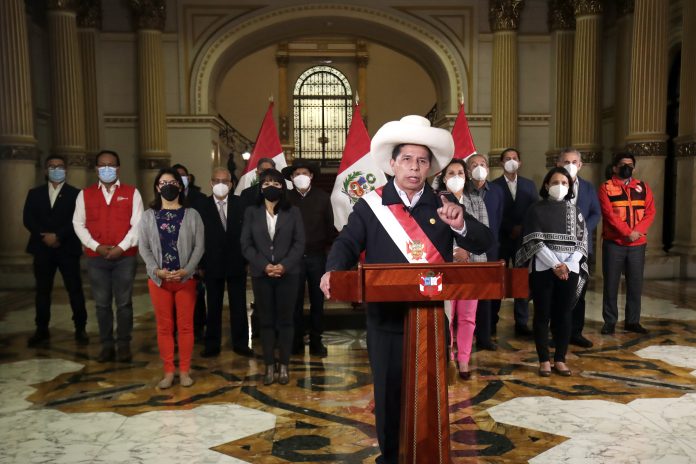Tony Saunois, Committee for a Workers’ International
Peru has been thrust into a deeper political and social crisis following the arrest of the former President, Pedro Castillo, and the vote to remove him from office. This action by the right-wing Congress, backed by the establishment elite, which must be opposed, followed Castillo declaring his intention to suspend the Congress and form a government of “exception”.
These dramatic events are a feature of the political and social convulsions sweeping Latin America as part of the second ‘pink wave’ – the election of a series of ‘radical left’ presidents in Chile, Colombia and Peru.
Yet once in power these new ‘left’ governments have rapidly sought to compromise with capitalism and moved to the right, failing to enact radical left or socialist policies which encroach on capitalism.
Castillo was no exception. Elected with a narrow majority in 2021, standing for the socialist Peru Libre party, which declares itself Marxist-Leninist, he rapidly tried to compromise with a section of the ruling class in Peru. Peru Libre demanded he leave the party, which he did shortly after the election, for abandoning its principles and implementing neoliberal policies.
His government was one of crisis from the beginning. Since winning the election, no less than 80 ministers and five prime ministers have resigned or been replaced. This is a continuation of the political turmoil which has rocked Peru in recent years. It has had six presidents since 2018 – only two of which have been elected.
Castillo narrowly won the election with 50.13% of the vote. His victory was a big blow to the ruling class, which rallied to the support of Keiko Fujimori, the candidate of corruption and reaction. Her party defends the authoritarian rule of her father, Alberto Fujimori (1990-2000), who is in prison for crimes against humanity.
However, having inflicted this blow against the ruling class, Castillo immediately attempted to make peace with sections of it. During the second round of the campaign, he defended the role of the private sector, and pledged to govern ‘responsibly’ and as a moderate. He opposed abortion, same-sex marriage and sex education. He argued that he is a progressive and not a socialist or communist.
But Castillo was a leader of the teachers’ union, and seen as a representative of the poor and oppressed. Peru Libre nominated him, as the party leader Vladimir Cerrón had faced dubious corruption charges. Yet the ruling elite never accepted him and has sought to remove him from power ever since his election victory. They would not trust him and feared what his election represented. Twice they have attempted to impeach him.
Castillo announced he was closing the Congress hours before a third vote on an impeachment on the grounds of “moral incapacity” due to corruption allegations. To date, there has been no proof that Castillo has been involved in corruption. However, corruption is endemic within the political establishment. Castillo’s chief of staff fled after US$20,000 in cash was found in his office lavatory! The ruling elite has enacted a coup to remove Castillo who they did not trust.
The Congress in Peru is totally undemocratic, riddled with reaction and corruption. According to one poll, it has an approval rating of 8%! Had Castillo attempted to carry through a programme to break with capitalism, mobilised the working class and poor, and built democratically elected committees of struggle – which a democratic socialist government could be based on – and convened elections to a revolutionary constituent assembly, taking steps to dissolve the Congress would have been correct.
This issue arose in Chile in 1973, when the demand to dissolve the capitalist-controlled Congress was blocking proposals by President Salvador Allende. However, in Chile at the time there was a democratic alternative in the elected committees of the Cordones Industriales in the factories, and the Poder Popular in the cities, and neighborhood organisations.
But in Peru, Castillo has failed to attempt to build similar organisations, and implement a programme to break with capitalism. Threatened with impeachment, he acted alone. The army, judiciary, his divided cabinet, and others refused to back him, and supported his arrest and impeachment.
The vice-president, Dina Boluarte, a ‘moderate’ safe pair of hands for the ruling class, has replaced him. However, her government will not usher in a period of stability or progress in Peru. Further crises and upheavals will follow. Some protests have taken place opposing the Congress and in support of Castillo. However, they so far appear to be limited, mainly because of the failure of his government to introduce radical socialist measures and prepare the masses for a struggle to break with capitalism and challenge the reactionary Congress.
The lessons of the failure of the Castillo government and the need for a programme, party, and building of mass organisations to break with capitalism need to be drawn during this and future upheavals.







